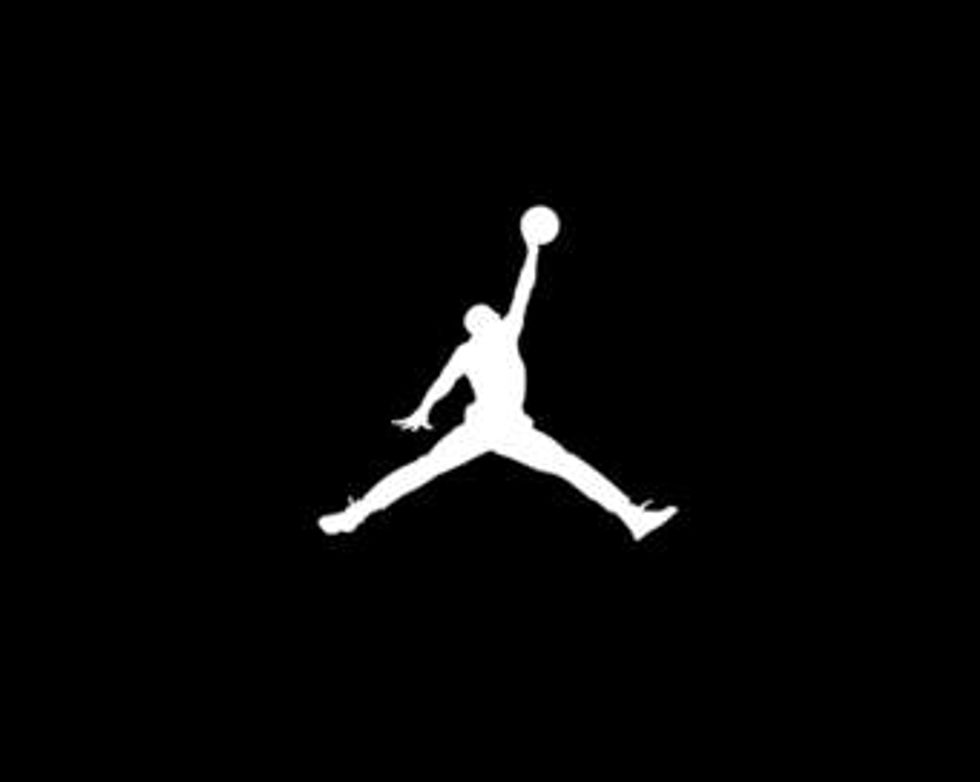Two things that are very close to me are basketball and shoes. Michael Jordan advanced the basketball world along with the shoe world with his Retro Air Jordan series. Jordan's sneakers describe some basketball history, along with the detailed creation of his sneaker brand. My all-time favorite Air Jordan shoe is the black/cement Air Jordan III. The shoe’s original release year was 1988, and they were the first Jordan brand shoe to feature the “Jumpman” logo. The sneaker was a mid-cut, which at the time was a new look for the basketball world. The most noticeable feature on the Retro III were the advances in the materials used on the shoe. The upper half of the shoe was made of full-grain tumbled leather; Jordan could wear a new pair every game without any stiffness. The front toe and heel of the shoe is wrapped in a faux elephant print, which gives it the cement name and distinctive look. Michael Jordan’s on court play increased as well in the III’s. Jordan averaged 35 points per game, went to his fourth-straight NBA All-Star game, and also won the league’s scoring title and won the league’s Most Valuable Player. Tinker Hatfield’s design on the Air Jordan III was so innovative that it kept Jordan from leaving the Nike brand.
Another Jordan classic sneaker is the Air Jordan Grape V. The V’s were inspired by a World War II fighter jet. Tinker Hatfield’s creativity continued to higher levels with the number V. This shoe had an asymmetrical collar, translucent outer sole and was the first basketball shoe to feature the purple and teal color scheme, which is where the name “Grape” comes from. Additionally the cut of the shoe was higher than the previous two shoes. Also on every pair of Air Jordan V’s there was a patch placed on the inside of the tongue that said “Air Jordan.” The heel featured an iconic “Nike Air” logo with a swoosh underneath. The heel was built with excellent ankle support. Jordan’s on-court performance continued in the V’s, being elected to his fourth-straight all-star game, sixth-straight league scoring title and made the all-NBA first team offense and defense.
The year of 1992 and the “Hare” VII’s may have turned Jordan into the international star that he is today. This shoe was worn by Jordan in his second NBA championship season, along with 1992 Olympic Games in Barcelona, Spain. Tinker Hatfield got his inspiration for this shoe from West African tribal culture. The VII’s had a more colorful and lightweight design that previous Air Jordan’s didn’t have. Another special feature of the shoe is in its name. The name “Hare” comes from Bugs Bunny, who was used during the advertisement of the shoe. Jordan also wore the Olympic inspired version during the USA’s “Dream Team” run, winning gold during the Olympic Games. The colorway of the shoe resembled the country’s red, white and blue flag along with gold accents. While wearing the VII’s Jordan won not only an Olympic gold medal, but his second-straight NBA championship, along with his second-straight MVP. Another personal favorite are the Air Jordan VIII’s (8’s). The original release year for this classic was 1993, my birth year. This shoe featured a unique color scheme on the midsole, a carpet like tongue logo and new mid foot straps. Three original colorways of the shoe were produced. The black and aqua color that Jordan wore in the 1993 NBA All-Star game is still the most sought after Jordan shoe made.
The retro 8 might also be known as the shoe Jordan wore during the Bulls three-peat as NBA champions. This shoe also made a huge appearance on the television scene. The 90’s hit show “Boy Meets World” star Corey Matthews wore the shoe during several episodes. This last Jordan sneaker broke all barriers for the shoe and basketball culture. The Air Jordan XI “Bred” was patent leather, which was used for the first time on a basketball shoe. The upper portion of this shoe was constructed of polymer coated thin nylon ballistic mesh material. The collar and tongue were padded for maximum ankle comfort. The translucent outsole lies atop a full length carbon fiber shank which provided an extra bounce. Also included was a full-length air sole unit for comfort. What made this shoe so notorious was its appearance in the blockbuster movie “Space Jam.” The Bulls also finished their season 72-10, which until the 2015-2016 Golden State Warriors posted a 71-9 record to capture the best record in NBA history.



















